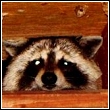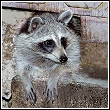Do It Yourself Cautions
Potential Problems
There are definitely dangers and disadvantages to do it yourself trapping. For instance, it is likely that the baby raccoon seen in the photo below would have been harmed or left behind to die had the homeowners tried to solve the problem themselves, or if a wildlife control company utilizing trap and relocate methods or improper procedures had been hired to do the job. Fortunately, the Wildlife Whisperer was called in to solve the problem and the raccoon baby was removed and revived unharmed.
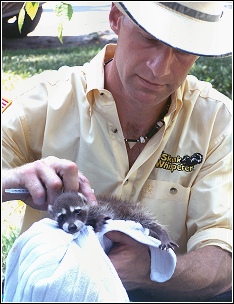
We are wildlife management professionals, and we know how to evict raccoons and other animals from your home in a humane manner, we'll get it right the first time and save you money in the long run too.
Case Study
This female raccoon shown below was live trapped by a homeowner who was fed up with the raccoons in their attic and wanted to save money by removing and relocating the raccoon themselves. The homeowner set a live trap in the attic located above the bedroom and left for work.
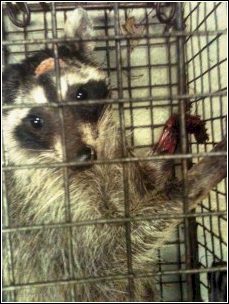
While he was at work, the raccoon was caught in the trap and began clawing away at the attic floor, which was also the ceiling of the bedroom. Eventually it dug its way through the ceiling and the trap fell through and crashed onto the bedroom floor.
As you can see in the above and below photos, the raccoon struggled so much that she wore the fur off of her head and the skin off of her paw trying to get out. Some raccoon trappers may try to claim that these injuries were caused by mange, but the wildlife rehabilitator who the homeowner took the raccoon to confirmed the wounds were from trying to get out of the trap.
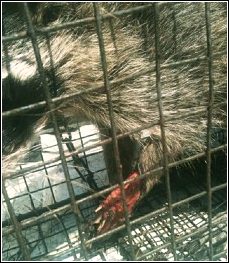
Three days after the raccoon was removed, the homeowner returned from work and heard the raccoon babies chattering for their mother. The do it yourselfer then called The Wildlife Whisperer to remove the baby raccoons and take them to the wildlife rehabilitator and raccoon proof his home. One of the baby raccoons had fallen down into a wall and died while wandering around in the attic looking for its mother. We did not find this out until about one week later when he smelled dead in the house. This turned the project into a dead animal removal job which mandated cutting a hole in the wall to remove the dead raccoon. Drywall repair, texture and painting were then required following the removal.
The moral of this story is - sometimes you should just call a raccoon removal professional instead of trying do it yourself methods, calling a redneck with a live raccoon trap and a truck - or even worse, a pest control company that just does wildlife removal on the side.
If you are not located in our Southwest Florida service area, please visit our humane wildlife control service providers page to find a humane wildlife professional in your area.
1242 SW Pine Island Rd., Suite 310
Cape Coral, Florida 33991-2126
help@totalwildlifecontrol.com



